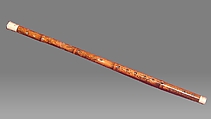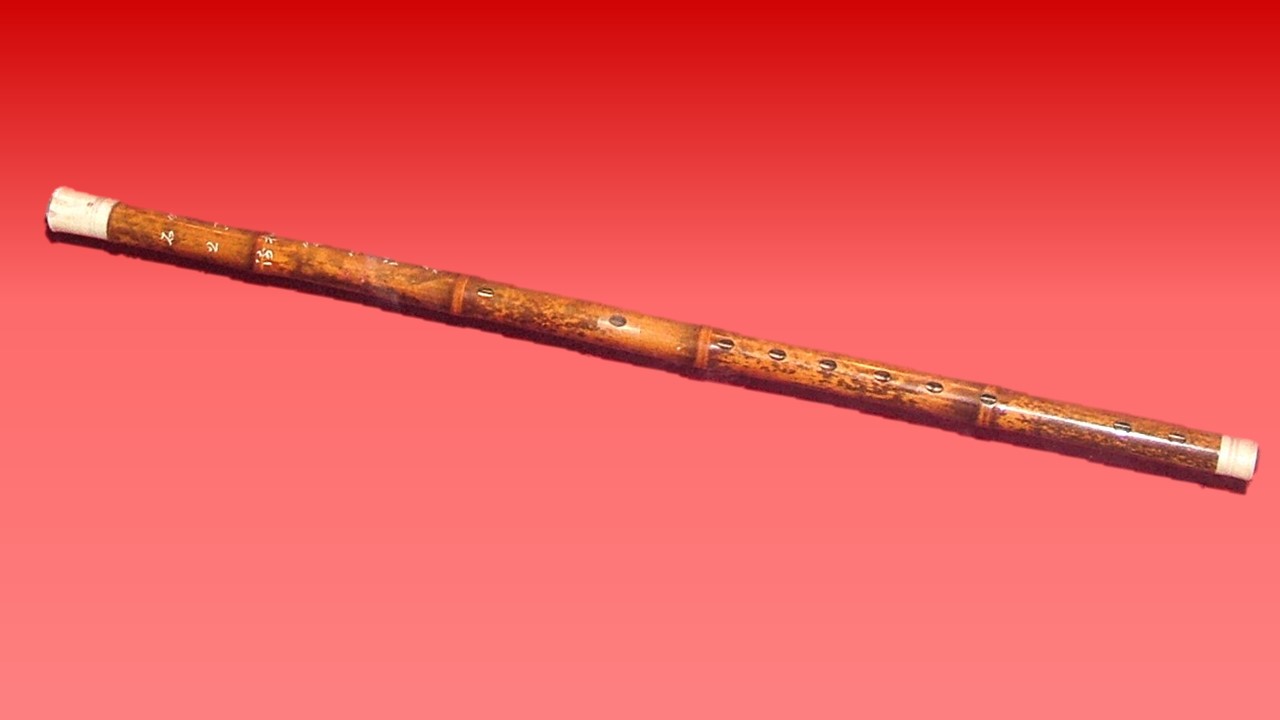Dizi (笛子 )
In addition to a blowhole and finger holes, the dizi, also known as di, has an extra hole covered with a membrane stripped from the inner layer of a bamboo stalk. This membrane, technically a mirliton, provides the flute with a poignant buzzing tone and helps to amplify the sound. There may also be a number of vent holes at the end, from which tassels are frequently hung. Dizi such as this one were used in kunqu opera, one of the styles that contributed to the development of Beijing opera. The two lines of poetry inscribed on this flute are from "An Autumn Night in a Moonlight Dwelling," by the Tang poet Wang Wei (699-761): Bright moon shines in the pines/ Clear stream flows over rocks. The instrument is signed by the calligrapher and/or carver, Wen Shan.
Due to rights restrictions, this image cannot be enlarged, viewed at full screen, or downloaded.
This artwork is meant to be viewed from right to left. Scroll left to view more.


.jpg)


